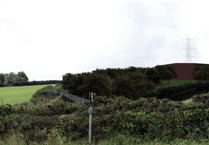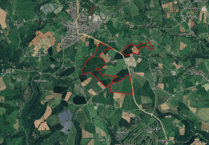EACH week, hundreds of planning applications come before Cornwall Council’s planning department, seeking to win approval for various plans right across the Duchy, with some concerning Holsworthy handled by Torridge District Council.
These plans can comprise of a number of different reasonings – ranging from permission to replace windows or listed building consent ranging up to large house building developments or changing of use of a building, for instance, from an office to a café, or flats.
Within this large and often complex system, there are a number of formats from which planning advice and approval can be sought.
These range from full applications where all the details which comprise a proposed development or work to a building are submitted, to outline applications, where further details are yet to be confirmed, for example, an outline application with reserved matters for appearance may not confirm the final proposed development but rather seek permission in principle.
An example of this is one for an outline permission for 20 dwellings on land with reserved matters for appearance and scale; the reserved matters would require further permission later for their inclusion.
Other types of applications include pre-application advice requests, where would-be developers submit often outline proposals to a local authority to ascertain whether it is likely to gain support or not prior to submitting a planning application.
The vast majority of applications are decided by planning officers employed by a local authority under ‘delegated powers’, meaning they do so on behalf of their employer, however, some applications are ‘called in’ by local councillors to be discussed at an area’s strategic planning committee meeting, meaning the final decision rests with a committee of councillors.
Dwellings require further planning permission
PLANNING permission is required for the proposed change of use of an agricultural building into six dwellings near Callington.
Mr Gareth Jones applied to Cornwall Council seeking the views of the local authority’s planning department on whether prior approval was required for the proposals concerning Barn at Great Lanhargy Farm, Bray Shop, Callington.
The site has previously been subject to planning applications. Prior approval for a change of use of an agricultural building to five dwelling houses at the site, comprising of three small and two large properties was not required for prior approval in 2023. In 2024, the council informed the applicant that converting the building into two dwellinghouses was also not requiring prior approval.
However, later applications for the construction of five new dwellings in place of those approved previously was refused.
In the latest pre-application planning response, the details of the plans were described as thus: “The building that is the subject of this application is located at Great Lanhargy Farm in Bray Shop, Callington. The building is a single-storey pitched roof structure formed out of three bays with pre-cast concrete portal frames and a fourth additional bay to the western side consisting of concrete blockwork with timber and steel framing.
“A concrete floor slab exists within the western bay as well as within the centre, with the remaining sections of the barn having a mixture of concrete floor slabs and unmade ground. The proposal is for the change of use of the building and its curtilage to form x6 C3 dwellinghouses, as well as building operations reasonably necessary for the conversion. This type of application for prior approval is assessed under Class Q, Part 3, Schedule 2 of The Town and Country Planning (General Permitted Development) (England) Order 2015 as amended (GPDO).
“A structural report has been submitted in support of the proposal which concludes that 'overall the building was in reasonable condition and will be suitable for conversion under class Q with some nominal maintenance work and without any significant structural upgrading or rebuilding'.
“Whilst confirming that the development was for the conversion of the barn, utilising two of the bays, little other reference (with any certainty) is made to the extent of works required to deliver the scheme as proposed. The three main bays of the existing building are to be retained whilst the smaller western bay is to be demolished. The south east elevation of the central bay is largely open, whilst the north west elevation of the central bay is enclosed by concrete block wall and fibre cement cladding. The roof covering of the central bay is to be retained, whilst the SE and NE elevations are to be removed, leaving a covered communal/courtyard area. Internally, almost no walling exists between the bays, with only a dwarf wall (2.25m high) acting as a divide between the central and south western bay.
“The outer bays are to be utilised for use as dwellings. To enable this, new walls will need to be constructed to enclose the bays and complete the building envelope. From the information submitted, it would appear that the applicant considers that these new walls would be internal.
“Further works required include the replacement of the floor structure with a new insulated slab, insertion of new openings which will require framing for lateral stability, and the insertion of internal walls.”
The council concluded that planning permission would be required for the works proposed to be undertaken.
Dentist seeks to change fence
A dental surgery has submitted a listed building consent seeking to replace a fence to prevent the risk of falling from height.
Portman Dental and Implant Clinic, based on Castle Street in Launceston is seeking permission from Cornwall Council in order to reduce the risk of falling from height by replacing the existing chain railing with a ‘powder coated zinc railing’.
The applicant told Cornwall Council that it would reduce the risk of falling, adding: “Portman Dental & Implant Clinic has been a feature of the Castle Street for a number of years offering a wide range of dental treatments. The property is a three storey terraced building with a slate covered pitched roof with dormer windows There is cast iron stanchions and steel chain railings to the front of the property.
“The proposals are to replace the existing railings with a solid zinc powder coated railing to improve patient safety. This will greatly reduce the risk of painted falling to the sides of the main entrance. There is a drop to the sides of the railings to basement level which is a significant health and safety risk. The development will be more in keeping with the adjacent property 13 Castle Street which has painted metal railings.
“The proposals are required in order to improve the health and safety provisions of Portman Dental & Implant Clinic. Care and consideration will be given to the Historic nature of the building and works will be conducted by suitable Contractors with relevant experience and credentials. It would be of benefit to users of the building who will be provided with a safer railing to use when entering and vacating the property, it would improve patient safety during an evacuation from the building in the event of a fire.”
The proposals are currently being considered under reference PA25/03616.
• Keep up to date with the latest planning applications and other statutory notices (such as alcohol licensing and probates) that affect where you live by visiting our online Public Notice Portal – be the first to know by visiting www.publicnoticeportal.uk/cornish-and-devon-post-series





Comments
This article has no comments yet. Be the first to leave a comment.